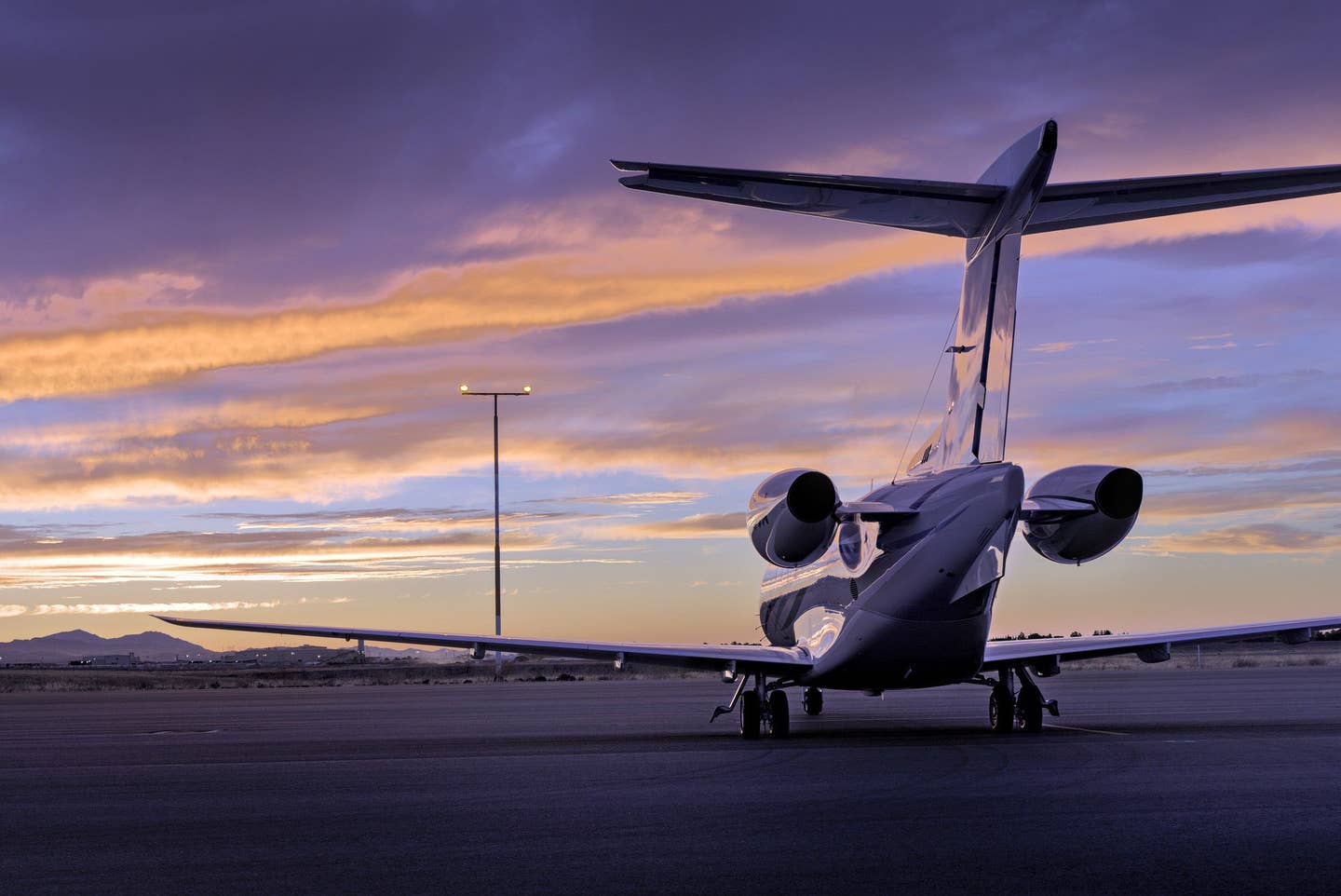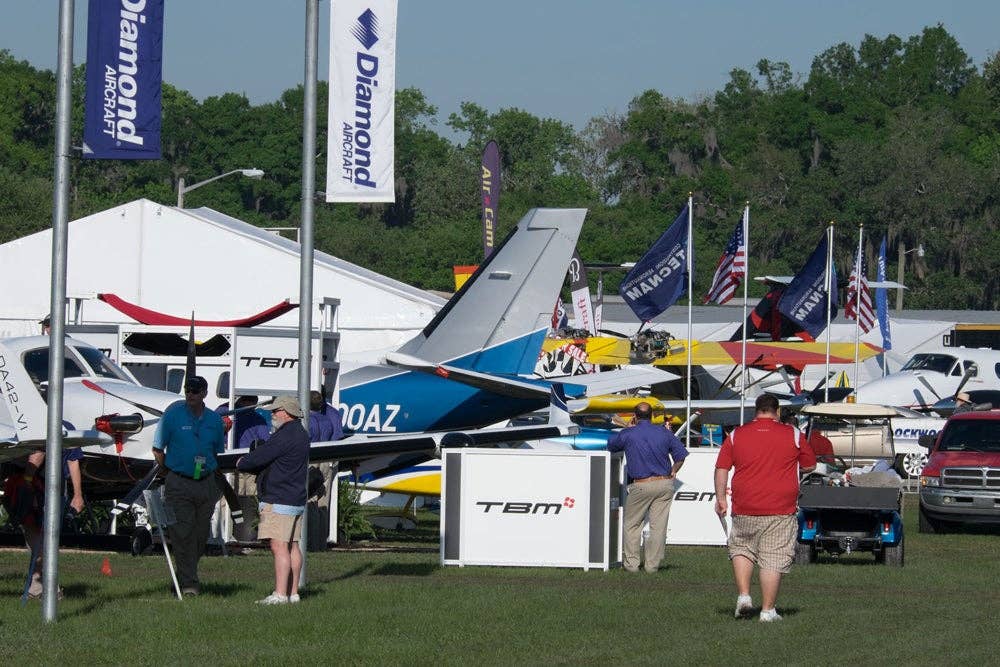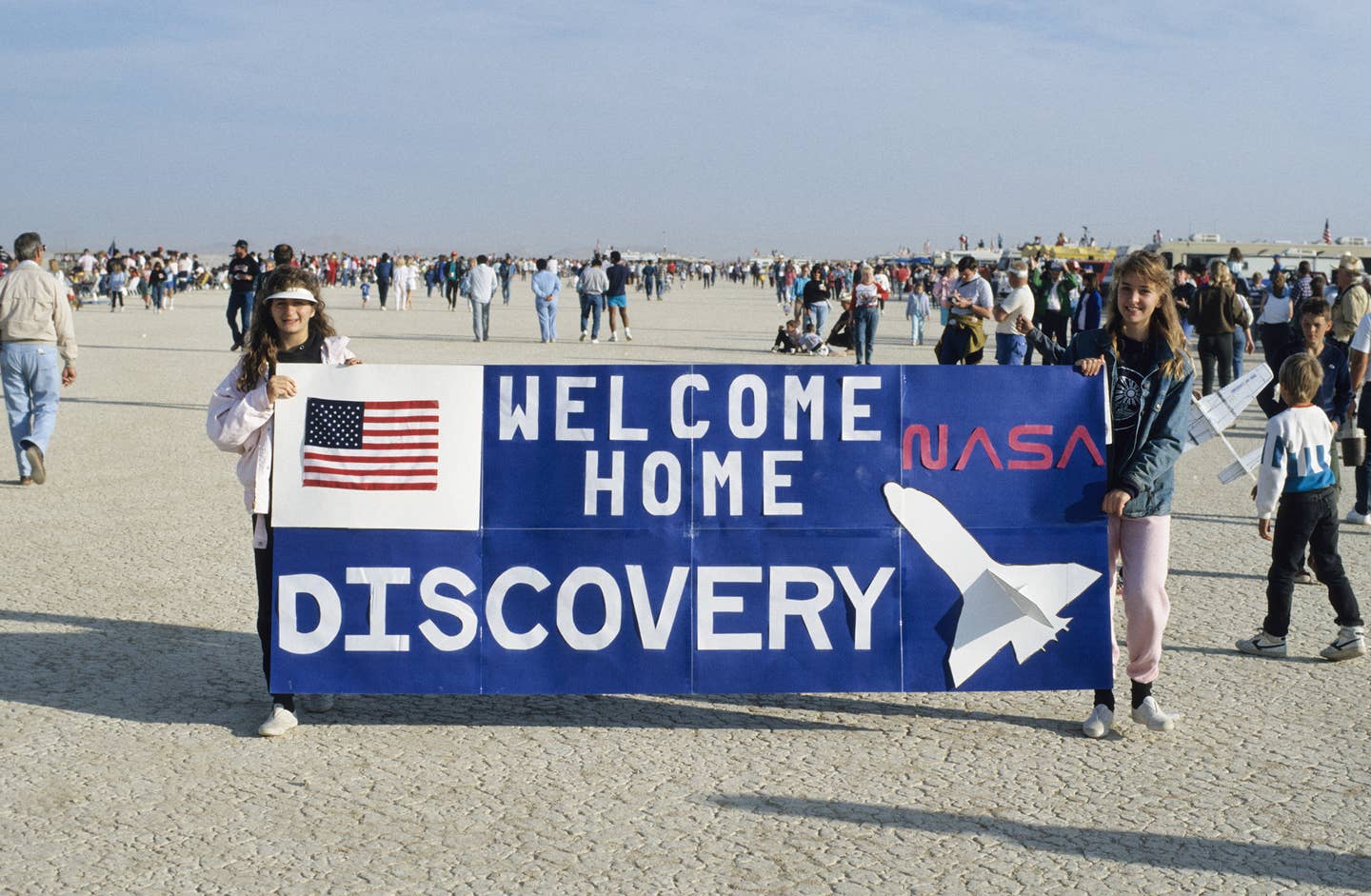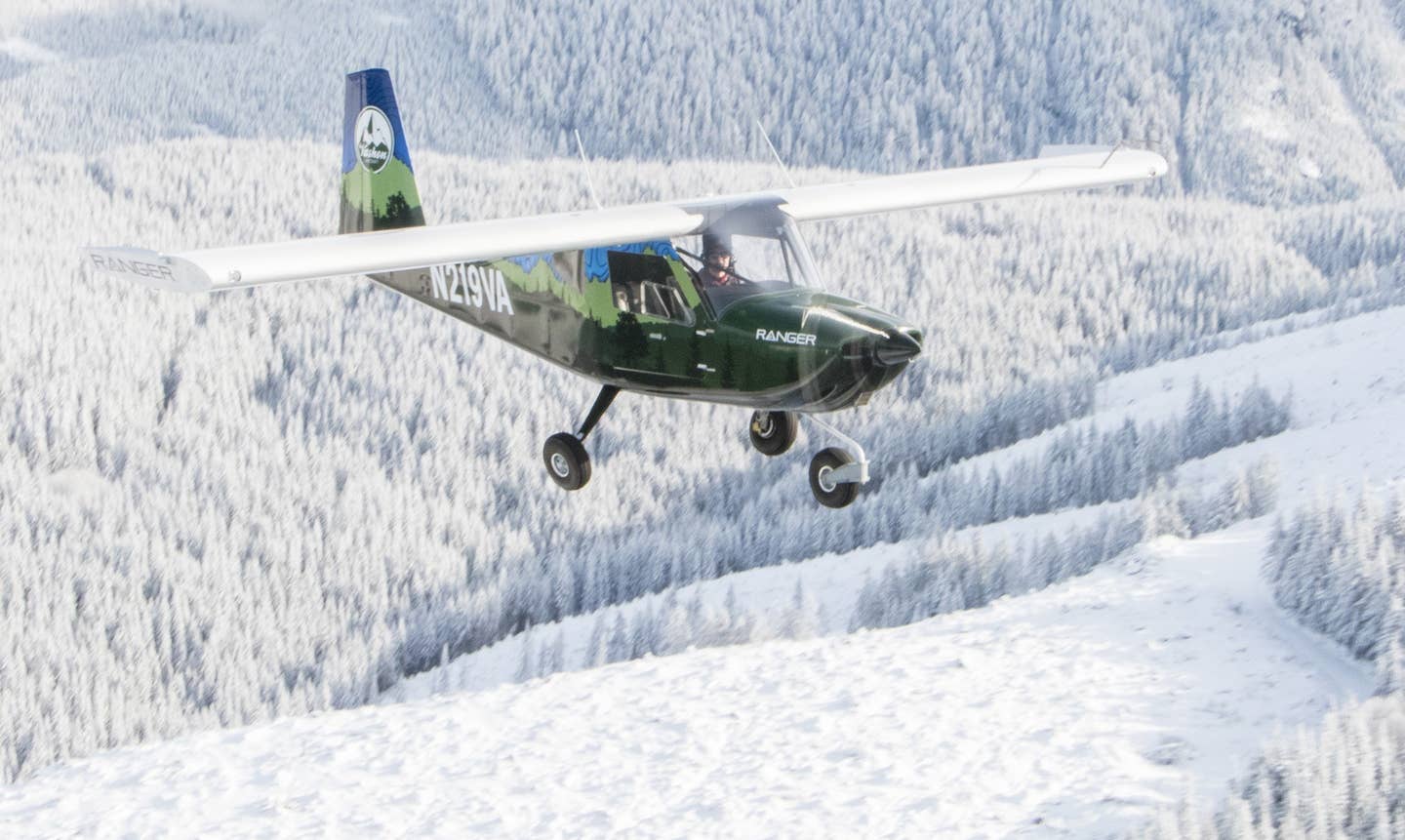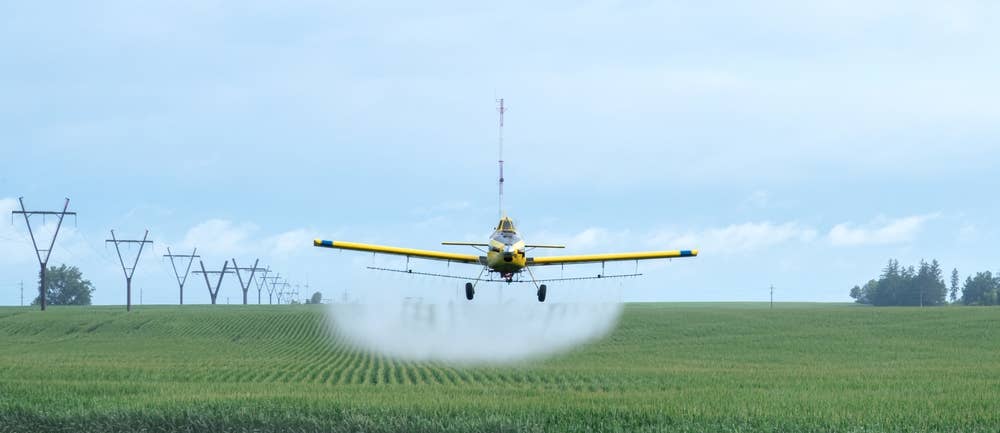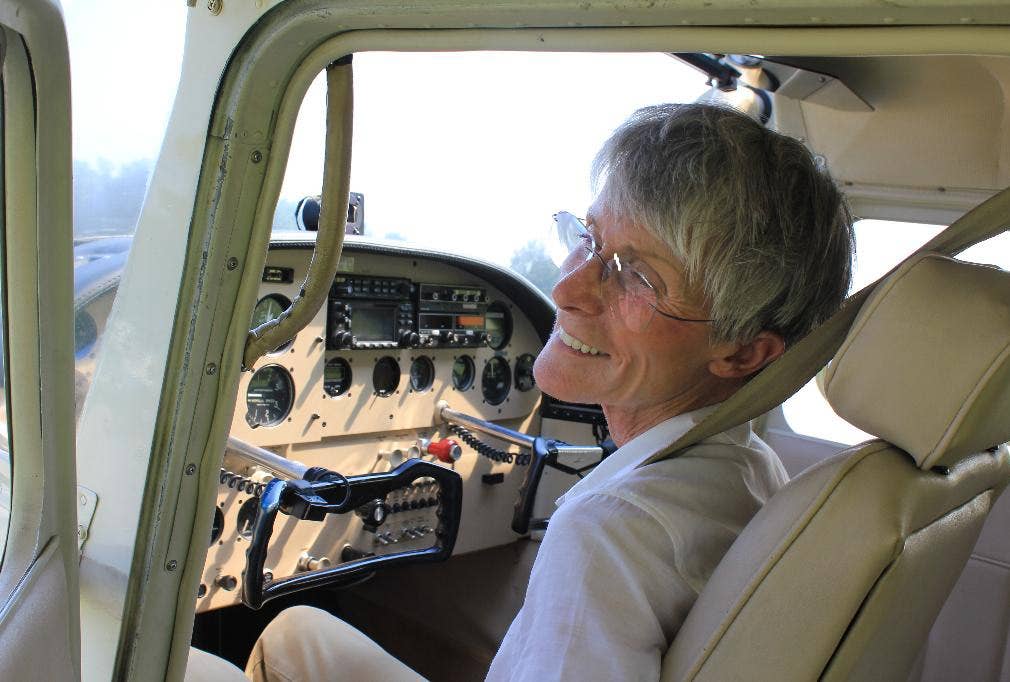Could Europe Beat Out the U.S. Air Taxi Industry?
We explore that question and more in this week’s Future of FLYING newsletter.
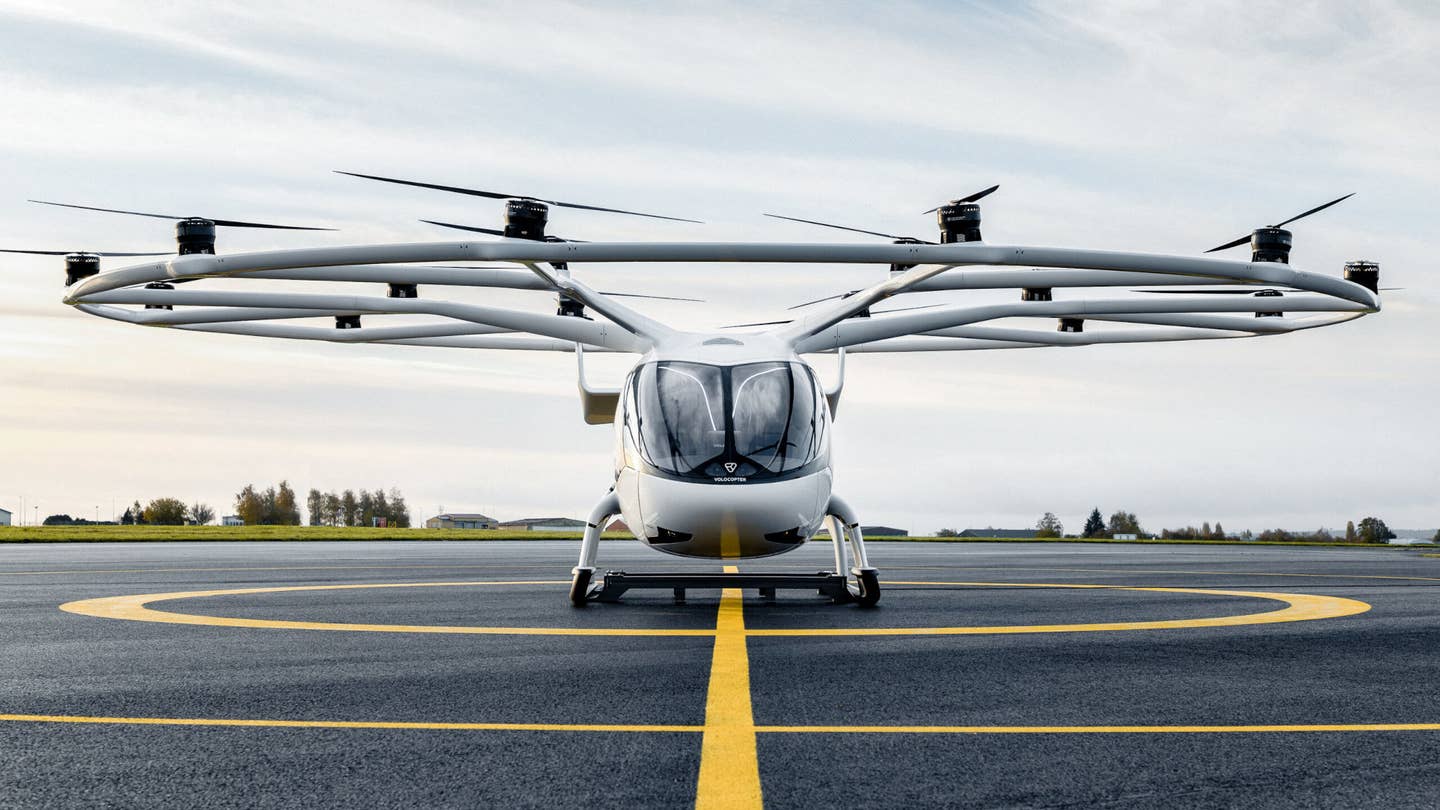
German manufacturer Volocopter’s VoloCity air taxi is one of many expected to fly at the 2024 Paris Olympic Games. [Courtesy: Volocopter]
Hello, and welcome to the Future of FLYING newsletter, our weekly look at the biggest stories in emerging aviation technology. From low-altitude drones to high-flying rockets at the edge of the atmosphere, we’ll take you on a tour of the modern flying world to help you make sense of it all.
Now for this week’s top story:
European Regulators Plot Out Drone, Air Taxi Operations
What happened? The European Union Aviation Safety Agency (EASA) sent a proposed regulatory framework for drone and vertical takeoff and landing (VTOL) air taxi operations—which it collectively refers to as innovative air mobility, or IAM—to the European Commission. Think of the FAA’s Innovate28, but in its near-final form.
Safety, safety, safety: EASA’s proposed opinion defines a few new terms, including IAM and VCA (VTOL-capable aircraft) which are slightly different from the FAA’s definitions of advanced air mobility (AAM) and VTOL. It also calls to modify the definition of helicopters to limit it to aircraft with two or fewer lift and thrust motors.
If it wasn’t abundantly clear from the header, the proposal places safety above all. EASA wants stringent certification requirements for certain VCA, like those ferrying passengers on air taxi routes, and the control and monitoring units (CMUs) that guide them. It would also require operators to routinely check on the airworthiness of their drones or VTOL aircraft.
But also, flexibility: Like the FAA, EASA is prioritizing safety—but not at the expense of the industry’s growth. It proposes a pilot qualification pathway where airplane or helicopter commercial license holders could add a VCA type rating, similar to the framework the General Aviation Manufacturers Association (GAMA) asked the FAA to adopt.
EASA’s framework would lower training costs for operators by allowing pilots to add VCA qualifications quickly while keeping inexperienced pilots away from new, high-tech aircraft. Like the FAA, the agency hopes to use existing regulations as often as possible but also laid out a few potential new ones, like the establishment of predefined drone or air taxi routes.
Quick quote: “This is the last piece of regulation required to enable the launch of VTOL and air taxi services for IAM. Once this has passed into law, individual manufacturers and operators will of course need to obtain all the required approvals from various authorities, but the framework rules for these operations will be complete,” said Patrick Ky, the former executive director of EASA who stepped down last week.
My take: EASA and the FAA are pretty buddy-buddy, but I’d be shocked if there wasn’t at least a little jealousy coming from our side of the Atlantic.
Innovate28 was a big step for the U.S. industry. But compared to EASA’s framework, it’s small potatoes. The two proposals have a few similarities, such as heavy reliance on rules and regulations that are already in place. The EASA rulemaking, however, is one step away from passage, while Innovate28 is still in its infancy. It will likely be years before the U.S. adopts a comprehensive framework.
It’s possible the EASA opinion helps to shape the FAA’s final rule. Several of its tenets have already been echoed by GAMA and others, and these groups will have plenty of sway on Capitol Hill as the agency revises its proposals. The FAA could look to EASA for guidance as it works out the finer details of its own framework—that would at least be a small win.
In Other News…
SpaceX Starship is ‘Ready to Launch’ Again…Or Is It?
What happened? If the FAA has any say in the matter (it does), the answer is nothing. SpaceX CEO Elon Musk told followers on X that Starship is “ready to launch” after a maiden voyage in April that began and ended in flames. But the FAA said not so fast: the company still needs to take a few required actions before the agency’s investigation into the April crash can wrap.
Still plenty to do: SpaceX filed a final mishap investigation report with the FAA last month, but the agency still needs to review it and lay out the modifications the company must make to its license before Starship flies again. There is no solid timeline for that process, unlike Musk would have you believe.
At the same time, the FAA and SpaceX are facing a lawsuit from five environmental groups that threatens to further derail Starship’s orbital activities. If they lose the case, the FAA may be forced to complete an environmental impact statement (EIS) for Starship, a process that could take over a year. That could make the mercurial business mogul’s predictions look silly.
FAA Approves 3 Firms for BVLOS Drone Operations
What happened? UPS Flight Forward, uAvionix, and Phoenix Air Unmanned—three of four firms that applied for FAA beyond visual line of sight (BVLOS) exemptions earlier this year—have all been granted approvals. The companies respectively will use drones to deliver packages, test flight systems, and conduct inspections.
Three down, one to go: The FAA also indicated to FLYING that Zipline, the fourth firm which applied for a waiver, is expected to receive its authorization in the coming weeks. A spokesperson explained the four companies were chosen because each sought a different use case for BVLOS flights.
The idea, the spokesperson continued, is to create a path to exemptions for firms across the drone industry, no matter what operations they conduct. The FAA hopes to award more summary grants, which are essentially streamlined approvals for “copycat” companies that can replicate the operations of firms that have already received waivers.
And a Few More Headlines:
- Bristow Group placed deposits for early delivery of five Elroy Air Chaparral cargo drones.
- Separately, Bristow and eVTOL maker Volocopter announced a partnership to bring urban air mobility services to the U.S. and U.K.
- President Joe Biden nominated AAM executive and former FAA deputy administrator Mike Whitaker for the agency’s top job.
- AFWERX, the innovation arm of the U.S. Air Force, strengthened its AAM partnership with NASA.
- Renewable fuels provider Gevo received a USDA grant to accelerate production of sustainable aviation fuels.
Spotlight on…
H2FLY
H2FLY is a subsidiary of a company I talk about nearly every week, Joby Aviation. This week, the company had some eye-popping news of its own: it completed what it’s calling the world’s first piloted flight of an aircraft running on liquid hydrogen. Previously, piloted flights have been made using hybrid hydrogen-electric engines by ZeroAvia, but none yet that we’re aware of solely powered by hydrogen.
Four flights—including one that lasted more than three hours—were made with the company’s hybrid-electric HY4 demonstrator, which used cryogenically stored liquid hydrogen to power a hydrogen-electric fuel cell system. H2FLY said the tests indicate its aircraft will ultimately have a range of over 930 miles, making it ideal for medium- and long-haul commercial trips.
The flights marked the end of Project HEAVEN, an E.U.-funded project that explored liquid hydrogen as a realistic fuel source for aircraft. Now, the company says it’s focused on the path to commercialization.
On the Horizon…
Probably the biggest update this week came from EASA—if you’re interested in the finer details of the agency’s proposal beyond what I talked about above, check out my deep dive on the 58-page document.
But the nomination of Mike Whitaker as FAA administrator could have some pretty significant ramifications on the U.S. AAM industry too. A former United Airlines executive who served as FAA deputy administrator under President Barack Obama, Whitaker is currently chief commercial officer of Supernal, the eVTOL arm of Hyundai.
Having been with Supernal for close to a decade now, Whitaker clearly has deep roots in the AAM industry. And if he gets the FAA’s top job, expect that sector to get plenty of attention—perhaps even more than former administrator Billy Nolen gave it before joining the industry himself as chief safety officer of Archer Aviation.
Elsewhere, FAA representatives at the Commercial UAV Expo in Las Vegas confirmed August 24 as the target for the agency’s BVLOS notice of proposed rulemaking (NPRM). David Boulter, associate administrator for aviation safety, also hinted there will be an announcement next week regarding relief for operators from the agency’s Remote ID rule, which takes effect next Sunday (don’t forget!).
This week also brought a couple of interesting developments regarding drone safety and privacy. In New York City, the NYPD’s deployment of drones to monitor Labor Day weekend festivities drew the ire of privacy and civil liberties advocates, raising questions around how law enforcement agencies elsewhere are using the tech.
Meanwhile, Dublin Airport (EIDW) was granted permission to bring down drones that present a risk to safe operations. It’ll be interesting to see whether other airports will request similar privileges as drone activity ramps up in the U.S.
Mark Your Calendars
Each week, I’ll be running through a list of upcoming industry events. The Commercial UAV Expo wrapped up Thursday in Las Vegas, but here are a few conferences to keep an eye on:
- U.S. Chamber of Commerce Global Aerospace Summit—September 12-13 in Washington, D.C.
- Defense and Security Equipment International 2023—September 12-15 in London
- DroneX 2023—September 26-27 in London
- World Aviation Festival—September 26-28 in Lisbon, Portugal
- Airtaxi World Congress—October 2-5 in San Francisco
- FAI World Drone Racing Championship—October 6-9 near Seoul, South Korea
- Intergeo 2023—October 10-12 in Berlin
- Dronitaly—October 11-13 in Bologna, Italy
- Commercial UAV Expo—October 23-26 in Las Vegas
- World's Unmanned Aerial Vehicle Conference—November 12-14 in Jerusalem
Tweet of the Week
Want to see your tweet here next week? Have comments or feedback? Share your thoughts on Twitter and tag me (@jack_daleo)! Or check out FLYING’s media accounts:
Facebook: FLYING Magazine - Home (facebook.com)
I want to hear your questions, comments, concerns, and criticisms about everything in the modern flying space, whether they’re about a new drone you just bought or the future of space exploration. Reach out to jack@flying.media or tweet me @jack_daleo with your thoughts.

Sign-up for newsletters & special offers!
Get the latest FLYING stories & special offers delivered directly to your inbox

